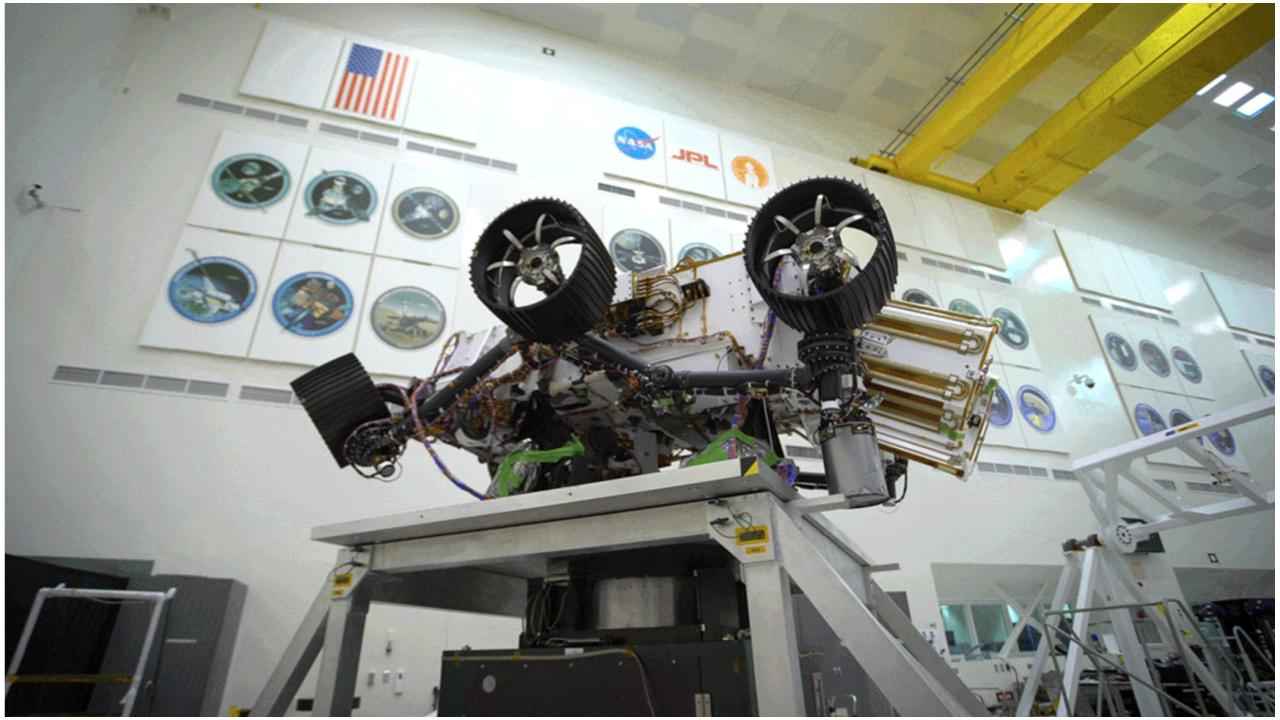NASA’s Mars 2020 rover twirls around to steady itself before journey

NASA places the Mars 2020 rover upside down on a rotating table to determine and correct its centre of gravity.
Mars 2020 is a one-tonne rover designed to traverse through rough, rocky surfaces on the Red Planet.
Anyone twirling around for a long time in the same spot is probably going to feel more dizzy than steady. We admit it; our headline seems somewhat paradoxical—but it's true. NASA reports in its latest blog post that its engineers took Mars 2020 for a literal spin so they could make it steady for the rover's upcoming journey to the Red Planet. In other words, the engineers at NASA recently spun the Mars 2020 rover around on a rotating tabletop to determine and correct its centre of gravity.
Towards the end of August, engineers at NASA's Jet Propulsion Laboratory (JPL) in Pasadena, California placed the Mars 2020 rover upside down on a spinning table to rotate the rover at roughly 1 revolution per minute in clockwise and anticlockwise directions. This exercise apparently allowed the engineers to determine the rover's centre of gravity (CG), a point that indicates that weight is evenly dispersed on all four sides of the rover.
“Establishing the rover's center of gravity is a key part of the assembly process and helps ensure that the spacecraft travels smoothly from launch to entry, descent and landing on Mars as calculated,” explains NASA in its blog post. Mars 2020 is a one-tonne rover designed to traverse the planet's rough and rocky surface. To balance out the weight across all four sides, the engineers had to add a total of nine tungsten weights, thereby increasing the rover's overall weight by 20 kilogrammes.
The rover comes with predetermined attachment points on its chassis for just this reason. NASA's Mass Properties Engineer Lemil Cordero likens the process carried out at JPL to a vehicle's tyre balancing. NASA says the rover will undergo one more final spin between March and May next year at Cape Canaveral in Florida before its scheduled lift-off in July. The rover is expected to touch down in Jezero Crater on Mars on February 18, 2021. During its mission, the rover will look for signs of microbial life and habitable conditions in the past.
Vignesh Giridharan
Progressively identifies more with the term ‘legacy device’ as time marches on. View Full Profile




